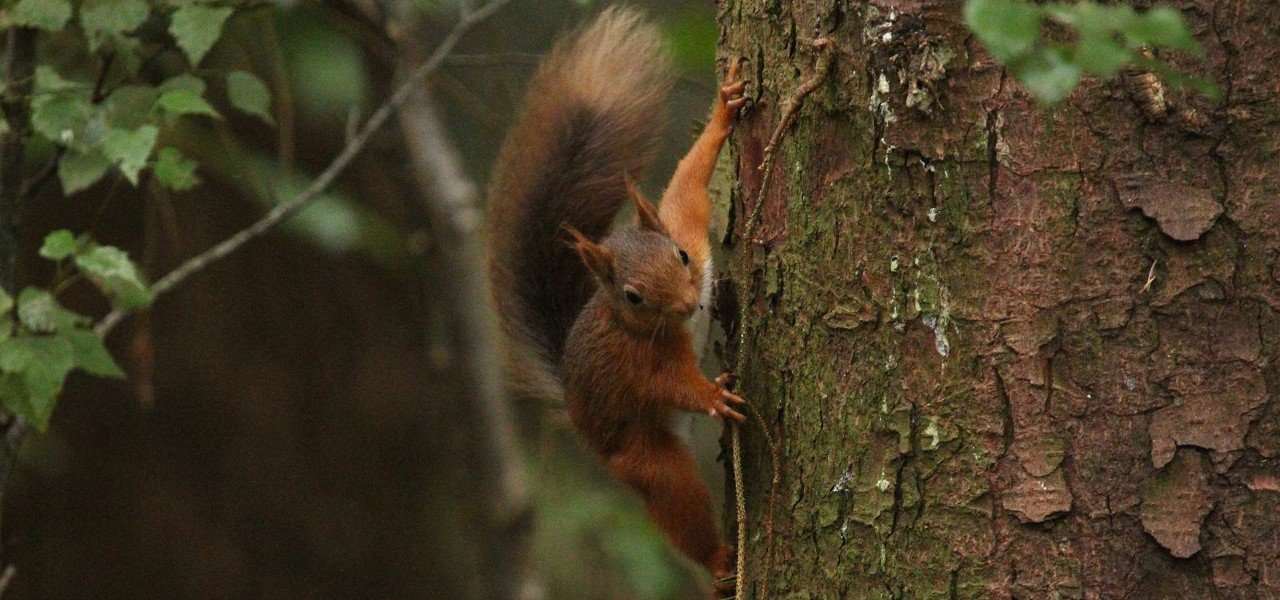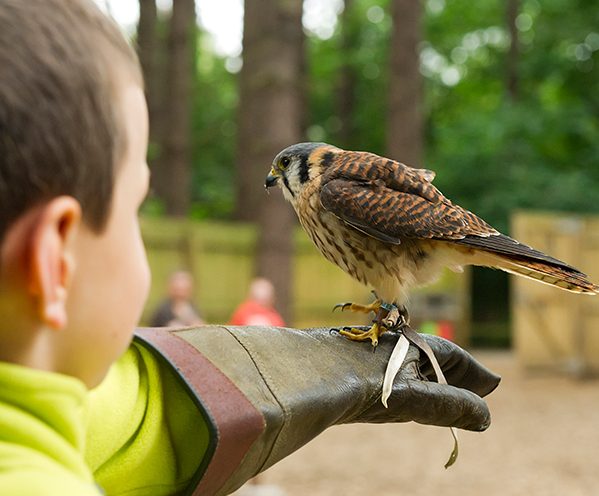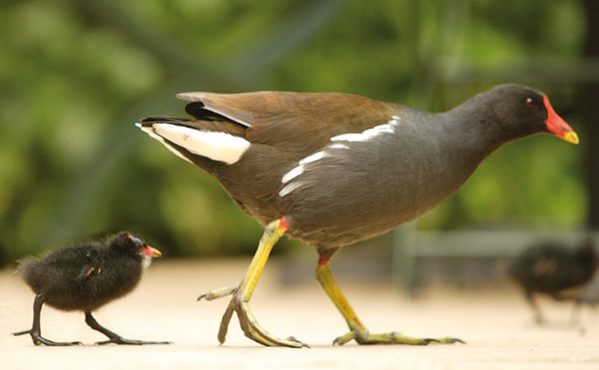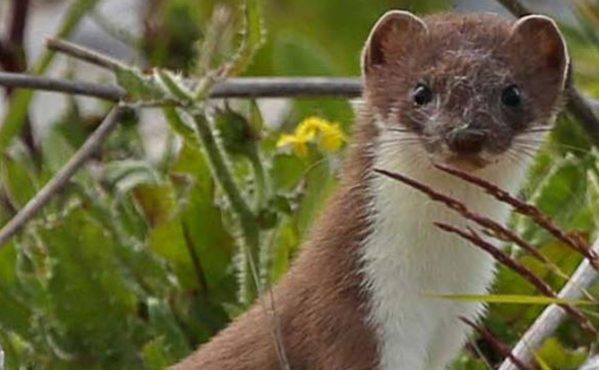Best spots to find wildlife - latest nature notes
Here at Center Parcs, wildlife is at the heart of our six villages. From vocal cuckoos singing in the treetops to playful young red squirrels scampering around the forest, there is always a new creature to discover on your short break, whatever the time of year. Keep reading for our latest nature notes provided by our expert Conservation Rangers, to keep you updated with all the comings and goings of our much-loved wildlife. Remember to keep your eyes peeled and your cameras at the ready and see what you can capture on your break!
Sherwood Forest
Throughout May, we were lucky enough to hear cuckoos calling at the top end of the village. The warmer weather has also meant we have seen the first common lizards of the year, with several spotted across the heathlands after a long few months of hibernation over the winter. As our lizard surveys continue into the warmer months, we’re hopeful we’ll see plenty more!
After a moderately warm May, June brought highs and lows. Fluctuating temperatures can be difficult for birds and plants to navigate, as the level of available food fluctuates alongside the temperature. We’ve certainly seen fewer butterflies in June when compared to previous years at Sherwood Forest, so hopefully the warm weather will stabilise a little.
Our Nature Walk at Dusk sessions have begun again, and we have an opportunity to show guests our nocturnal animals, with badgers and bats at the top of the list. There are also some interesting birds to see in the village at this time, with woodcocks in particular being spotted in the evenings. Woodcocks are rarely seen as they are ground-dwelling birds with perfect camouflage, so keep a lookout on your break to see if you can spot one!
Elveden Forest
Spring migrants arrived with all the normal warblers being recorded this month, chiffchaff, willow warbler, blackcap, common whitethroat and garden warbler. The cuckoo was first recorded on 7 May and has been calling all along the perimeter track from the golf course to the Treehouses. Grey wagtails have again nested in the Aqua Sana yard even with all the building work that’s going on and its relative, the pied wagtail, is nesting around the Village Square.
Dragonflies and damselflies are now emerging and the new pond on the front-drive seems to be a magnet for them at the moment. On 16 June there were over 60 pairs of common blue damselflies mating and laying on the large patch of hornwort (an aquatic plant) in the middle of the pond.
Longleat Forest
The wet and cold weather in June appeared to have an adverse effect on some earlier nesting birds with the warm spell coming just in time to benefit those that left it a little later. Many blue, great and coal tits sadly lost their broods soon after hatching as their food supply of moth caterpillars weren’t available.
Roe deer and muntjac were seen, and badger and fox tracks were found on the main path. Fresh otter tracks were again found on village too.
Tawny owls were very vocal near the Redwood Apartments and one flew within a couple of metres of our heads before perching silhouetted in a nearby tree. The first fledgling birds of the year are always a welcome sight as it is a sure sign of successful breeding. Wrens, blackbirds, nuthatches and song thrushes were the most frequently encountered during June.
Whinfell Forest
The presence of fawns is one sign that summer at Whinfell Forest is in full swing. Roe deer are a regular sight, and the distinctive barks of the bucks can often be heard in the more remote areas of the forest.
Adult and juvenile red squirrels have been observed during transect surveys colonising new areas within the forest, establishing dreys (the name for squirrel nests) and expanding their territory.
Badger offspring are usually born between February and April, emerging above ground 8-10 weeks later. A wildlife camera situated at Whinfell’s largest sett has allowed the Conservation Rangers to monitor three badger cubs, now beginning to forage for themselves in between boisterous play fighting. Another species engaging in playful antics are the red squirrel juveniles frequently seen chasing each other up and down trees in spiralling patterns, behaviour that allows for the development of their coordination and strength.
Woburn Forest
We took in another four hedgehogs (two boys and two girls) from Shepreth Hedgehog Hospital. These animals had been rescued and rehabilitated before being brought here to Woburn Forest, where they were placed in our release pens to acclimatise before being allowed to wander off into the forest. Our pair of swans with their cygnets continue to do well and are managing to cope with their newfound popularity since the return of our guests.
Our population of moorhens have been increasing over the last month with four new chicks being spotted on the main lake in amongst the marginal reeds. The chicks were described to me as being ‘ugly and cute at the same time’. I think it is because their heads are initially bald and they have large feet for the size of their bodies and wings that look like little stumps! But then their bodies are this amazing ball of fluffy feathers, which is usually what catches our guest’s eyes.
Longford Forest
“Summertime and the living is easy” is how you feel when you are greeted every morning with the beautiful songs from the chorus of birds like the coal tit, blue tit and especially the great tit. With over 70 different songs and calls, its predominant song of ‘tea-cher tea-cher’ can be heard on the forest edge, which adds to the ambience of the wakening of Longford Forest.
Our red squirrels are now spending most of their time foraging in the tree canopy and can be particularly elusive, often hiding on the opposite side of the tree trunk. The young are called kittens and are born blind and naked and only resemble adults at three months. Guests really enjoy looking out for them! This is the best season to admire new generations of all kinds in the forest.
If you and your family love nothing more than a short break surrounded by nature and wildlife, book a Center Parcs break today and experience the forest coming alive for yourselves! Or if you’ve already got your break booked, why not try one of our nature activities during your stay? Explore the forest with Nature Detectives, meet our magnificent birds of prey in Falconers Club and see our majestic owls up close in an Encounter with Owls.





